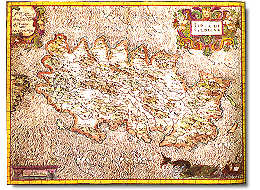
The Treaty of Utrecht granted Sardinia to Austria, which governed until 1717, when
Cardinal Alberoni, a Spanish minister, sent a war fleet to Sardinia. The new Spanish
conquest lasted until August 2, 1718, when the Treaty of London gave Sardinia to
Vittorio Amedeo of Savoy.
The city's situation appeared static. Although its fortified walls had been reinforced,
they had not resisted the enemy. There was a serious housing shortage. New floors
had to be added onto the antique dwellings in Castello, because all available space
was filled by representatives of political, administrative, and military power.
The most characteristic feature of the Piedmontese period was the involvement of military
architects in civil construction. Amedeo Felice De Vincenti was the first to bridge
the gap between military and civil architecture.
The enlargement of the Jesuit College of S.Croce in 1735, changes in the Viceregal Palace,
the project for the Basilica of Bonaria, the plan for the renovation of the salt works, organization
of the dockyards and the eastern pier, are examples of the military responding positively to the
new needs of the civilian population.
Another "engineer in uniform" exemplifying this new spirit was Saverio Belgrano di
Famolasco, who designed the complex made up of the university, seminary, and theater
on the Bastione (rampart) del Balice.
An important contribution was also made by Giuseppe Viana, a student of De Vincenti,
who substituted his master's Baroque style with the more severe lines of Classicism
in the church of Sant'Anna. Nor did the Piedmontese neglect the city's fortifications.
The unbroken line of bastioned walls reached their maximum development during this
period.
|







